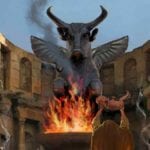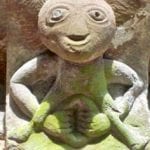 Mysteries
Mysteries  Mysteries
Mysteries  History
History 10 Surprising Stories About the Texas Rangers
 Humans
Humans 10 Philosophers Who Were Driven Mad by Their Own Theories
 Miscellaneous
Miscellaneous 10 Video-Game-Worthy Weapons and Armors from History
 Weird Stuff
Weird Stuff 10 Psychics Who Accurately Predicted Wartime Events
 The Arts
The Arts 10 Pieces of Art Inspired by a Broken Heart
 Health
Health 10 Science Fiction-Sounding New Medical Treatments
 History
History 10 Surprising Facts About the Father of Submarine Warfare
 Space
Space Ten Astonishing New Insights into Alien Worlds
 Weird Stuff
Weird Stuff 10 Bizarre Summer Solstice Rituals Still Practiced Today
 Mysteries
Mysteries Top 10 Haunting Facts About the Ghost Ship MV Alta
 History
History 10 Surprising Stories About the Texas Rangers
 Humans
Humans 10 Philosophers Who Were Driven Mad by Their Own Theories
Who's Behind Listverse?

Jamie Frater
Head Editor
Jamie founded Listverse due to an insatiable desire to share fascinating, obscure, and bizarre facts. He has been a guest speaker on numerous national radio and television stations and is a five time published author.
More About Us Miscellaneous
Miscellaneous 10 Video-Game-Worthy Weapons and Armors from History
 Weird Stuff
Weird Stuff 10 Psychics Who Accurately Predicted Wartime Events
 The Arts
The Arts 10 Pieces of Art Inspired by a Broken Heart
 Health
Health 10 Science Fiction-Sounding New Medical Treatments
 History
History 10 Surprising Facts About the Father of Submarine Warfare
 Space
Space Ten Astonishing New Insights into Alien Worlds
 Weird Stuff
Weird Stuff 10 Bizarre Summer Solstice Rituals Still Practiced Today
10 Mysterious Soundscapes That Rocked The Ancient World
Until recently, archaeology has focused almost exclusively on the visual, giving us a limited view of ancient cultures. But the emerging field of archaeoacoustics broadens our understanding from a cold snapshot of bones and stones to a more lyrical story of how our ancestors lived. Think of it as the soundtrack of prehistory. While some of these soundscapes may seem primitive, others are nothing less than astounding.
10Cividale Del Friuli Hypogeum
The Cividale del Friuli Hypogeum is an underground complex in search of its history. Located in Northern Italy, some historians believe it was used as a mortuary or ancient prison. But archaeoacoustic researchers believe the answer lies in the structure’s eerie acoustics, which are reminiscent of the more famous Hal Saflieni Hypogeum in Malta.
The Cividale del Friuli Hypogeum has three underground levels, which appear to have been carved out of solid rock. Looking at the shape of the rooms, researchers believe that the hypogeum’s acoustics were deliberately enhanced with trusses to create a mystical effect during prayers and singing. Their theory is that visitors here participated in religious rituals based around a Mother Goddess.
To test this, scientists set out to determine if human exposure to certain sound frequencies in the hypogeum’s chambers could produce an altered state of consciousness without the use of chemical substances, an effect known as resonance phenomenon. Rather than just asking study participants how they felt when chanting or listening to music in the hypogeum, the scientists also reviewed the more objective results of EEGs and a TRV image analyzer, which monitors human vibrations.
The researchers found that a low-pitched male voice praying or singing caused eerie reverberations that altered the brain functions of most listeners. A subject could be impacted after as little as eight minutes of ritual chanting. Sometimes, the participants reported seeing images or feeling sound in their bones, rather than consciously hearing it. Infrasounds, which are sounds inaudible to humans, can spark feelings of fear or awe at high volumes.
To work, the phenomenon requires the sound waves to have a frequency between 90Hz and 120Hz. But individual participants respond differently to various frequencies within that range. That may explain why the hypogeum’s builders tuned each chamber to a different frequency—so that everyone could participate in the mystical, otherworldly feel of their rituals.
However, a higher-pitched female voice wouldn’t produce these effects at all, seemingly ruling out the Mother Goddess theory—until researchers discovered that a priestess could produce the resonance response with a drum played at the right pace and location in the hypogeum.
9Ringing Rocks Park
Nestled among the forest in the 128-acre Ringing Rocks Park in Pennsylvania is an open space where boulders are piled 3 meters (10 ft) high. In stark contrast to the surrounding green trees, the barren gray and white boulders sit at the top of a hill as though dropped from the sky. Other than some lichen, the area is surprisingly clear of vegetation. Animals also tend to stay away. When struck with a hammer or smaller rock, about a third of the boulders are “live rocks,” which ring like a bell or wind chime.
Believed to be over 200 million years old, the boulders are made of diabase, which is cooled volcanic rock. Some scientists think that freeze and thaw cycles caused by nearby glaciers broke the diabase into the boulders we see today.
In 1965, geologist Richard Faas of Lafayette College tested the acoustics of the rocks in his lab. When struck, most rocks actually emitted a series of tones far below the frequencies heard by humans. The remaining rocks produced various low tones that interacted with each other to create higher-pitched, audible frequencies. Neither Faas nor anyone else has determined the actual physical mechanism that causes the rocks to ring.
The ringing rocks are the subject of Native American legends. One, “The Legend of the Ringing Rocks,” tells how the boulders supposedly got their musical properties. Two young lovers from warring tribes would meet by moonlight at the Gray Rocks. One night, the young warrior, Atchokatha, waited with outstretched hands on Signal Rock in the center of the boulders as his beloved Namechi came toward him—but then one of Namechi’s people shot Atchokatha in the chest with an arrow. When Namechi reached him, Atchokatha clutched her to him, only for a second arrow from his brother to kill Namechi as Atchokatha held her. As the two tribes battled around the young lovers, Atchokatha’s tomahawk fell onto Signal Rock with a loud clang like a bell. Startled, the warriors stopped fighting. As the two dead lovers fell down together, sweet music from the rocks rang above them. The two tribes believed Namechi’s death caused the rocks to ring and venerated the ringing rocks from then on.
8Kupgal Hill
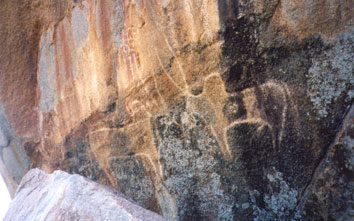
In the Bellary District of Karnataka in Southern India there is a large granite hill covered in rock gongs and ancient engravings known as petroglyphs. The rock gongs are grooved boulders, referred to as “musical stones” by the locals, which produce deep, gong-like tones when struck with a smaller rock.
The petroglyphs date back to the Neolithic period of the Stone Age and depict the long-horned, humpbacked cattle of southern India, along with male human figures. In some pictures, the men hold bows and arrows; in others, they’re in chains. The images appear to show the ancient inhabitants of the area either herding or stealing cattle. Researchers believe the petroglyphs and the rock gongs were created for use in rituals designed to contact the supernatural world. One theory is that the upland valley containing almost all of the rock gongs was used as a sort of prehistoric auditorium, amplifying sound at certain locations.
The Kupgal Hill site was first recorded in 1892. It was then lost until researchers rediscovered it around 2004. Sadly, granite mining has already destroyed some of the rock art in the area.
7Temple Of Kukulkan
Amid the ancient ruins of the Mayan city of Chichen Itza stands the limestone Temple of Kukulkan, an amazing marriage of science and religion. The temple, also called El Castillo, is a large step pyramid about 30 meters (98 ft) in height, with a base measuring 55 meters (180 ft) on each side. Kukulkan was a Mayan deity whose name means “feathered serpent.”
From a scientific standpoint, the temple functions as a solar calendar. Each side of the pyramid has a stairway with 91 steps, which lead up to a common top step or platform housing the square Upper Temple. That’s a total of 365 steps, one for every day of the year. The stairways also split the pyramid’s nine tiers into 18 segments, the number of months in the Mayan calendar. On the spring and fall equinoxes, the setting sun casts a shadow that looks like a serpent’s tail slithering down the northern stairway to join a stone carving of the head of the serpent, Kukulkan, at the bottom.
To the Maya, the Temple of Kukulkan was a symbolic sacred mountain, one of the power points connecting the real world to the Otherworld. The Maya repeatedly built new temples over old ones in order to accumulate this sacred energy, using elaborate rituals to make it easier for gods and ancestors to cross over into their living king.
In many ancient cultures, spirits spoke in echoes—and according to acoustic engineer David Lubman, the Maya were no exception. If you clap your hands at the base of the pyramid, the sound returns as the chirped echo of the sacred quetzal bird, which was believed to be the messenger of the Mayan gods. Lubman believes that Mayan priests would clap to the crowds gathered at the temple. When the crowds clapped back, the pyramid would respond in the quetzal’s voice.
The temple has at least two other surprising acoustic qualities. If you shout when facing the base of the pyramid, the echo will return as a piercing shriek. Furthermore, someone talking normally on the top step of the pyramid can be heard by people on the ground for quite a distance.
6Maeshowe
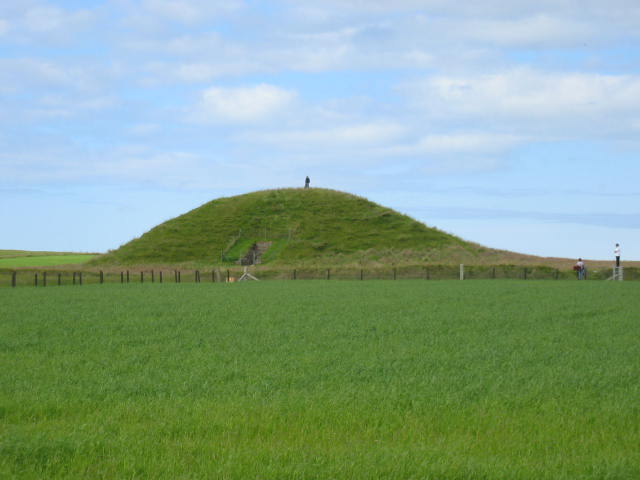
Built around 2700 B.C. on the Scottish island of Orkney, Maeshowe is one of the most impressive monuments remaining from prehistoric Europe. A chambered cairn (a mound of stones built over a kind of mausoleum), Maeshowe is believed to have been the center of community rituals filled with music, chanting, and dancing.
Back then, Maeshowe was a conical stone structure approximately 11 meters (36 ft) high and 30 meters (100 ft) in diameter. Inside were a large central chamber, three side chambers, and a long entrance tunnel. The entrance is famously positioned so that light from the setting sun illuminates the central chamber for a few days during midwinter, the darkest time of year.
But acoustics may be Maeshowe’s most dramatic feature. Many ancient cultures relied on altered states of consciousness to communicate with the spirit world. Sound is one way to do that and Maeshowe was able to produce some incredible sonic effects.
In addition to echoes off the stone walls, an otherworldly effect could be created by standing waves. This occurred when sound waves either canceled each other out or combined to enhance sound. At Maeshowe, a chanter or drummer might seem to be surrounded by silence while his noise thundered in the cairn’s side chambers. To prehistoric people, this may have seemed like a supernatural effect coming from the spirit world, especially when it was hard to determine the source of the sound. Standing waves may also distort speech.
But infrasound, which is sound below our ability to hear, would have been the real showstopper in these ancient ceremonies. Infrasound may have altered the participants’ mental states by creating unsettling physical or psychological sensations such as dizziness, headache, a feeling of flying, nausea, or heightened pulse rate.
This effect is caused by the Helmholtz resonance—the same effect caused by blowing across the neck of a glass bottle. At Maeshowe, the frequency needed for this effect was 2Hz. Humans wouldn’t hear such a low pitch, but they might experience disorientation from it. Drumming or even just walking inside the cairn could produce this 2Hz frequency.
No one knows for sure if the ancients took advantage of Maeshowe’s sonic properties, but some researchers think it’s likely they did.
5Mazinaw Rock
At least a thousand years ago, the ancestors of the Algonkian people created 295 pictographs, or rock paintings, along the base of Mazinaw Rock, a 30-meter-tall (100 ft) lakeside cliff in Ontario’s Bon Echo Provincial Park. The name “Mazinaw” is believed to be Algonkian for “pictures in the water” while the “echo” in Bon Echo’s name refers specifically to the cliff face of Mazinaw Rock.
The pictographs are clustered on the bottom of the cliff where the lake meets the rocky surface and amplifies these incredible echoes. This wasn’t an easily accessible spot—the lower water level at the time meant that the artists would have had to stand up in their canoes in a difficult current. In native legend, the place where a cliff rises from the water is believed to be a favorite location of manitous, or spirits. Some archaeologists wonder if the Native Americans believed these echoes were the sounds of manitous calling to them through the stone.
According to Algonkian legend, a shaman in a ritual trance could pass through the cliff to exchange offerings with the manitous for supernatural healing powers called “rock medicine.” If the shaman did this incorrectly, his spirit would be trapped inside the cliff and he would die or go insane in the real world. These beliefs made the cliff a sacred gateway to the spirit world. The Algonkians also believed that manitous spoke through dream visions to their shaman in these echoing spots. If the shaman received a dream vision, he would paint it on the rock with red ochre, a sacred mineral believed to breathe life into the pictures.
4Stonehenge
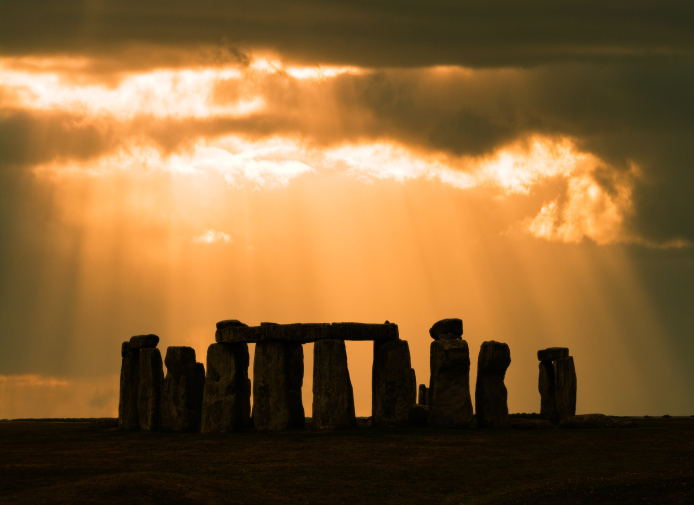
Around 2500 B.C., the builders of Stonehenge hauled enormous bluestones about 386 kilometers (240 mi) from the Preseli Hills in Pembrokeshire, Wales, to form the inner circle of the famous megalithic structure in Wiltshire, England. This was a herculean task—so why did they do it? Some archaeologists believe they were motivated by the musical quality of the stones. Bluestones are actually a type of volcanic rock known as dolerite, which may emit metallic sounds similar to gongs, bells, or tin drums when struck.
The builders didn’t leave written records. But indentations on the bluestones suggest they were used to create sounds. The ringing stones and the lack of “trash” found during digs lead some archaeologists to believe that Stonehenge was used as a site for religious rituals. If they combined the sound of ringing rocks with the possible use of hallucinogenic mushrooms which are still abundant in the area, ancient stoners may have seen spirits dancing before their eyes. There’s even evidence that the acoustics could have heightened this effect by fostering Alpha rhythms in the brain, helping to create the trance-like state of consciousness that was often key to ancient religious rituals. Ringing stones may not seem like a high-tech special effect now. But in prehistoric times, they must have seemed remarkable.
3Cup-Marked Ringing Stones
In Sweden, the word for ringing stone is “klangsten.” At some point between the late Stone Age and the Iron Age, small depressions or hollows known as “cup marks” were carved into many of the stones. The cup marks are about 3–10 centimeters (1–4 in) in diameter and as much as 5 centimeters (2 in) deep.
In Sweden, cup marks are often referred to as “alvkvarnar.” “Alv” means elf and “kvarn” means windmill. Traditional stories give some indication of how cup marks might have been used. For example, it’s believed the Swedes may have used them to make offerings to the elves in return for a good harvest. In a fertility ritual, Swedish men may have ejaculated into the cup marks. Also for fertility rites (and possibly for death cults), the cup marks may have been used as bowls to offer blood, butter, coins, and more. After cremation, the Swedes may have ground the bones of dead people in cup marks in order to enrich the soil. Rain water collected in the cup marks may have been used to treat warts and other conditions. Ancient shamans may have created a percussion instrument, a “shaman drum,” using the cup marks. Finally, some traditions hold that the cup marks symbolized the joining of the earth goddess with the heavenly god.
Many Swedes also believed that the stones rang because gold or silver was hidden under them, or possibly inside them. With the ringing stones often placed near trade routes, some researchers think travelers used the stones to ask for good luck during their trips. Yet another theory has the Swedes using cup marks to communicate with their ancestors’ spirits or other people or things inside the stones. At least one ringing stone, the “Sangelstainen,” is believed to have been a sacrificial altar.
2The Animal Master’s House
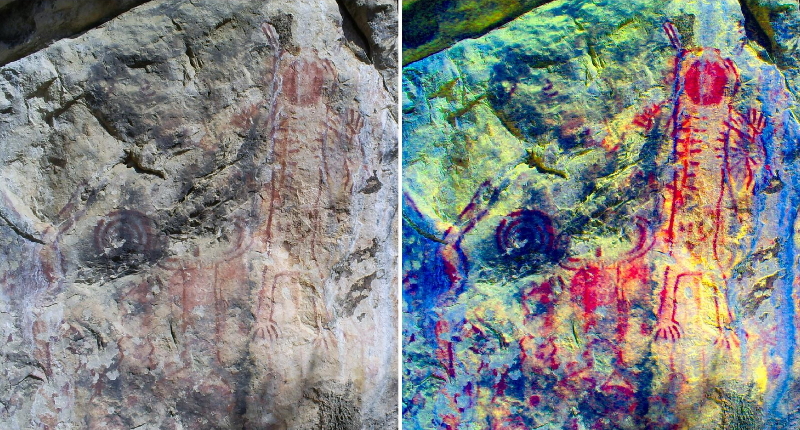
The Animal Master’s House, also called Yahwera’s House, is a limestone monolith approximately 13 meters (43 ft) high, located near Caliente in the Back Canyon area of California. The Kawaiisu, a Native American tribe whose people have lived in the area for thousands of years, believe that the limestone monolith, with its painting of Yahwera, is a portal to the underworld he rules.
The painting depicts Yahwera as a floating animal-human figure that peers out from the rock’s surface. There’s also a large snake that guards the tunnel entrance to the underworld. But it’s the sounds that bring this site and its story to life. There are rebounding echoes off the limestone that sound like deer hoofbeats or voices calling from inside the rock.
According to Kawaiisu legend, the androgynous Yahwera usually appears as a small hawk and replenishes game in our world by bringing dead animal spirits back to life. He may also provide good luck to hunters or give songs as medicine to the sick. Even so, the Kawaiisu considered hearing Yahwera to be a potentially bad sign, possibly because contact was considered tricky. Only troubled people would seek Yahwera out.
The mythical Yahwera stories share common elements. A sick person or a hunter looking for good luck goes to Yahwera’s House, hears the supernatural beings (including deer that have been killed in our world but live on as spirits), and finds his way through the portal to the underworld where the spirits live.
A visitor can get good luck in hunting by taking hunting weapons from the underworld’s walls. If the visitor is sick, he’ll eventually meet with Yahwera and be given food that reappears each time it’s eaten. When the person can eat no more, he’ll choose a magical song as a cure. Then the person will try to get back to our world. Magical entrances and exits in these stories are always hard to access. If Yahwera warns the person not to reveal his experience to others, that person will die if he disobeys.
For the dwindling Kawaiisu, it’s critical to preserve these types of sites and their stories. Many of their traditions have been lost, but they’re determined to make their culture survive.
1Chavin De Huantar
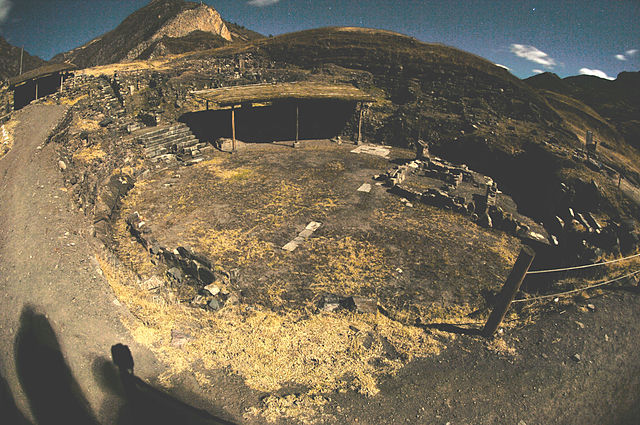
Three thousand years ago, the ancient stoners at Chavin de Huantar in the Peruvian Andes made the hippies at Woodstock look like amateurs. These pre-Incan ancients had no written language, but 240 kilometers (150 mi) north of Lima they built a huge stone temple complex where priests are believed to have used eerie sounds and psychotropic substances to enthrall, disorient, and possibly control their followers. The 0.8-kilometer (0.5 mi) Gallery of the Labyrinths is a twisted maze of underground echo chambers, passageways, and drains, all connected by air ducts beneath the main public gathering space.
Besides the complicated floor plan, acoustic tricks were likely used to shock and awe visitors. The priests could channel rushing water from nearby streams through canals in the complex to imitate the sound of snarling jaguars. Human voices and the trumpet calls of conch shells, called pututus, filtered through the passageways in their own maze of sound—sometimes silent, sometimes amplified and echoing off the walls in multiple directions, and sometimes resonating at disorienting frequencies that could make visitors feel as though their minds were rattling in their headss. The labyrinth also filtered sunlight through ducts to cast distorted shadows on the stones. Researchers speculate the overall experience would have been so terrifying and otherworldly that visitors would have been completely in the priests’ thrall.
To heighten these effects, there’s evidence that priests gave their visitors hallucinogenic drugs, including mescaline extracted as juice from the native San Pedro cactus. Stone sculptures in the maze depict people using drugs as they morph into animal-like gods, complete with upturned eyes and nasal mucus trailing from their noses, as is common with cactus use.
One duct in the complex leads from a sunken outdoor plaza deep inside the labyrinth to the mouth of the Lanzon, a 4.5-meter (15 ft) statue depicting the main deity of the Chavin culture. Sounds projected through the duct could make the statue appear to talk.
Stanford University researcher John Rick believes the priests at Chavin de Huantar used these frightening special effects of sound and light, along with psychotropic drugs, to gain power over visitors, turn them into followers, and change the Chavin culture from a democratic society into a hierarchical one controlled by the priests.

